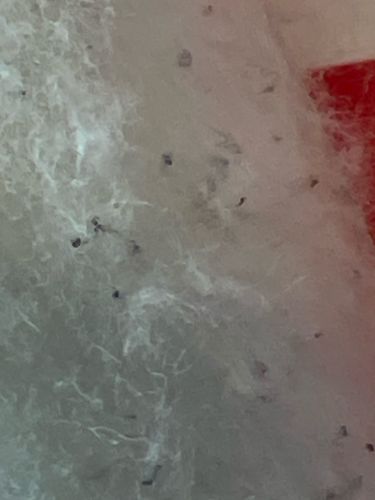Mold Mites / Dust Mites
Scientific Name: Various species in the order Sarcoptiformes
Order & Family: Order Sarcoptiformes, various families (e.g., Acaridae for mold mites, Pyroglyphidae for dust mites)
Size: Typically 0.2 to 0.5 millimeters (mm)

Natural Habitat
Damp, humid environments with organic debris or mold; dust mites specifically thrive in human dwellings, feeding on shed skin flakes and preferring soft furnishings like bedding, carpets, and upholstered furniture.
Diet & Feeding
Mold mites feed on mold, fungi, and decaying organic matter. Dust mites feed primarily on shed human and animal skin flakes (dander), as well as organic detritus.
Behavior Patterns
Invisible to the naked eye, these mites are typically found in large numbers. They reproduce quickly in favorable conditions (high humidity, ample food source). Dust mites are not parasitic; they do not bite or burrow into skin. Their activity is mostly nocturnal, feeding on organic matter accumulating in their habitats.
Risks & Benefits
Potential risks: Allergies and asthma are the primary concerns. Dust mite feces and decaying body parts are a major trigger for allergic reactions, including rhinitis, asthma, and eczema, in sensitive individuals. Mold mites can also contribute to indoor allergen issues. No significant benefits to humans directly, though they play a role in decomposition of organic matter in the ecosystem.
Identified on: 10/22/2025